Search alphabetically (by title):
- ALL
- #
- 0
- 1
- 2
- 3
- 4
- 5
- 6
- 7
- 8
- 9
- A
- B
- C
- D
- E
- F
- G
- H
- I
- J
- K
- L
- M
- N
- O
- P
- Q
- R
- S
- T
- U
- V
- W
- X
- Y
- Z
Titles
Charles P. Graves Jr
|
Filed under: Architecture & Urban Renewal
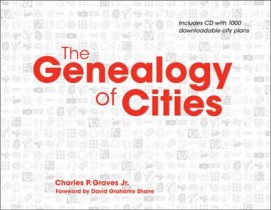
The Genealogy of Cities is a compilation of ancient and modern city plans, from 350 BCE to the present, depicting both built and proposed plans. Written in clear and accessible prose, it is illustrated with more than 500 plans drawn at the same scale, a unique feature of this work. It provides a previously unavailable tool for academics and professionals who must grapple with the issue of scale in researching and teaching urban design or when creating new urban spaces. Author Charles P. Graves Jr. created these computer-generated plans to provide a method of understanding models for modern cities while also creating a series of typological diagrams for both historical periods and city fabric. Also included in this volume is a CD containing nearly 1000 plans that will allow the user to print the urban plans at any scale.
Filed under: Architecture & Urban Renewal
John Y. Simon
|
Filed under: Civil War Era
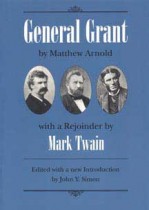
General Grant by Matthew Arnold with a Rejoinder by Mark Twain presents conflicting essays and cultures. Matthew Arnold’s 1886 essay on Grant praised the general and his posthumously published Memoirs, but to many Americans its tone seemed patronizing of their hero and country. Grant’s friend and personal benefactor, Mark Twain, delivered a caustic rejoinder to the Army and Navy Club of Connecticut in April 1887. Thus Arnold became a pet prejudice of Twain’s and may have served as an inspiration for A Connecticut Yankee in King Arthur’s Court. In this volume, Twain’s rejoinder is published in a correct text for the first time since the Hartford Courant printed his speech.
Filed under: Civil War Era
Clifton La Bree
|
Filed under: Military History
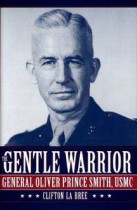
In November 1950, United Nations forces in Korea were stopped in their advance toward the Yalu River by Chinese Communist forces and were in danger of being overrun. Vastly outnumbered by enemy forces, the First Marine Division was cut off from its base at Wonson. General Oliver Prince Smith, commander of the First Marine Division, is credited with bringing the division and attached army units to safety, leaving no wounded behind and, in the process, destroying the effectiveness of several Chinese units.
Filed under: Military History
Thomas Sayers Ellis
|
Filed under: Poetry, Wick Chapbook

“His best work is characterized by thoughtfulness, strong descriptive skills flavored with vivid turns of phrase, and emotional complexities in both the poems themselves and the effects they evoke.” —Boston Book Review
Filed under: Poetry, Wick Chapbook
Artimus Keiffer
|
Filed under: Regional Interest
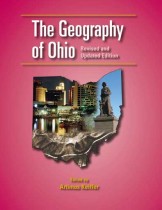
Using a systematic and thematic approach, The Geography of Ohio serves as the definitive study of both the state’s landscape and people scape. Standardized and updated maps are featured throughout in full color, as well as current census and demographic data. With the addition of sidebars, study questions, a glossary, and an extensive bibliography, The Geography of Ohio is the essential text for understanding Ohio’s evolution and its place in the “new order.”
Filed under: Regional Interest
Thomas Rowland
|
Filed under: Audiobooks, Civil War Era, History, Military History
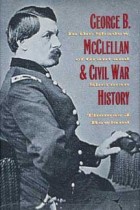
Perhaps no other Union commander’s reputation has been the subject of as much controversy as George B. McClellan’s. Thomas J. Rowland presents a framework in which early Civil War command can be viewed without direct comparison to that of the final two years. Such comparisons, in his opinion, are both unfair and contextually inaccurate. Only by understanding how very different was the context and nature of the war facing McClellan, as opposed to Grant and Sherman, can one discard the traditional “good general-bad general” approach to command performance. In such a light, McClellan’s career, both his shortcomings and accomplishments, can be viewed with clearer perspective.
Filed under: Audiobooks, Civil War Era, History, Military History
Bill Livingston
|
Filed under: Black Squirrel Books, Sports
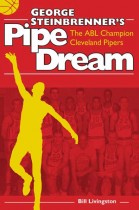
In George Steinbrenner’s Pipe Dream, Bill Livingston brings to life the remarkable story of the one-season wonder Pipers and their unlikely national championship. Drawing on personal interviews and extensive research, he introduces readers to the personalities that surrounded the organization, including John McLendon, the first African American head coach in any professional sport; Jerry Lucas, one of college basketball’s greatest players; Dick Barnett, the best player on the team and the driving force for their ABL championship; the extravagantly talented prodigy Connie Hawkins; and Jack Adams, the Pipers’ captain, who was traded in midseason in a fit of pique on Steinbrenner’s part.
Filed under: Black Squirrel Books, Sports
Joseph R. Reinhart
|
Filed under: Civil War Era, Civil War in the North
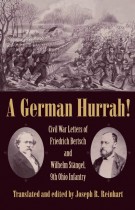
Lieutenant Friedrich Bertsch and Chaplain Wilhelm Stängel of the 9th Regiment Ohio Volunteer Infantry were not typical soldiers in the Union army. They were German immigrants fighting in a German regiment. Imbued with democratic and egalitarian ideals, the pair were disappointed with the imperfections they found in America and its political, social, and economic fabric; they also disdained puritanical temperance and Sunday laws restricting the personal freedoms they had enjoyed in Europe. Both men believed Germans were superior to Americans and other ethnic soldiers and hoped to elevate the status of Germans in American society by demonstrating their willingness to join in the fight and preserve the Union at the risk of their own lives.
Filed under: Civil War Era, Civil War in the North
Mark A. Snell
|
Filed under: U.S. History
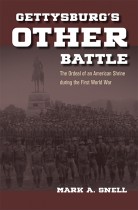
Gettysburg is known as the second bloodiest battle of the 19th century and as the site of Abraham Lincoln’s 1863 speech that gave new meaning to America’s Civil War. By the turn of the next century, the battlefield was enshrined as a national park under the jurisdiction of the War Department. In 1913, graying veterans commemorated the fiftieth anniversary of the momentous battle, dubbed the “Peace Jubilee,” a unity celebration largely administered by the U.S. Army. Four years later, the Army returned to establish a Regular Army infantry- training cantonment on the battlefield. The Tank Corps took over in 1918, and the area was dubbed “Camp Colt.”
Filed under: U.S. History
Deborah Fleming
|
Filed under: Forthcoming, Nature, Regional Interest

In the Ohio counties of the Allegheny Plateau, 19th-century barns hewn from old-growth wood rest near remnant forests, reminders of the state’s deep agricultural roots and rich ecological past. Through 14 linked, meditative essays, Deborah Fleming, author of the award-winning Resurrection of the Wild: Meditations on Ohio’s Natural Landscape, persuasively and passionately argues for protecting these vestiges of the region’s natural and rural history.
Filed under: Forthcoming, Nature, Regional Interest
Subject/Title category archive











